A Conversation with Jay Johnson, Pt II
- david malmberg
- Aug 16, 2021
- 12 min read
Updated: Aug 17, 2021

The response to Part I on this interview with Jay has been remarkable. A testimony to his continued popularity in the world of ventriloquism and beyond.
What is important, as you will see in Part II, is Jay's intelligence about the business, the craft and his approach to both.
Interestingly, Jay has done more in and for this business than many of us realize. He has hosted four of his own variety specials; three syndicated game shows and starred in two television series. One thinks of Broken Badges, (1990) You Think You've got Troubles (1983) and Celebrity Charades. (1979) as examples of his work. Literally, there is too much to list as you can see in the collage below.

And of course, there is Soap. An amazingly successful run of a sitcom with a ventriloquist. Trust me, Jay Johnson is no lightweight in this business.
And now, from vent-o-gram...Part II... 'A Conversation with Jay Johnson.'

It is always nice to receive kudos and awards. What is important to you as a performer/person?
Great question. What is important to me is to be the best I can be, every time. What I loved about winning the Tony is not so much about the trophy that I can be proud of, but, it is the fact that it is given to a performer that does eight shows a week, live, to a live audience. There are no retakes. You don’t know when a Tony voter is there. So, you can’t save up all week and do one great show. You have to do eight great shows a week. It is a live performance. That is my passion…performing for people. The Tony was a pat on the back to say, yeah, we love you in the theater.
You talk about passion. When did you discover your passion for performance?
I don’t remember a time when I wasn’t passionate about it. Interestingly, when you are passionate about something, you never think of it in terms of a career, or a way to make a living, or that it will even work out. You are just driven to do it.
When you were really young you had imaginary friends that were influential to your passion for performance, yes?
Imaginary friends Jackie and Gaga on the telephone. Then, there was Big Jon and Sparkie...
Big Jon and Sparkie?
Big Jon and Sparkie was a radio show.
Were those characters any kind of a turning point for you?
I think so.
Big Jon, like Alvin and the Chipmunks just sped up his voice and talked back to him. It really wasn’t ventriloquism, but in the live performance they had a big stringed puppet which they marched on stage. It was a great shock to me when I saw Sparky and then my brother said that Big Jon actually did the voice of Sparky. I thought, wow.
Speaking of 'wow,' your vent stuff is highly original. Do you write your own material?
Yes.
Have you used writers?
I have used writers in the past. At the time I was never quite satisfied with the investment. Writers gave me ideas and I had to polish the heck out of it to find what I wanted for my various characters.
Explain.
Well, if a writer says, “I think it would be great if you did this kind of a thing…” well, that is more valuable to me than having someone just write it down.
Have you ever lost your funny bone?
You know, it’s actually been hard to find my funny bone. I would see other ventriloquist’s who were good acts, but I never found them to be funny. So I have had to work really hard to find the funny, so to speak. And, I think I did.
I look at somebody like Robin Williams for example. He seemed to have some kind of genetics or chemical properties that just made him funny.
You know, I agree with that. It was in his DNA.
Do you think you have the DNA or is it something that is more structured? Let me put it this way, do you work off the cuff?
I love to work off the cuff. Not in crucial situations where you end up falling in the well. (laughs) I love the mind that is pushed to creativity. Put me on the spot. Ventriloquism is a mind game set in that you know where you’re going with your partner. I know what the puppet is going to say. I know what I’m going to say back. But in that same structured process, something happens that I don’t think about. It always has and always will. Squeaky, Bob, Darwin, Nethernore, Amigo or Spaulding will all say something that I did not think of at the moment.
So, whatever DNA that is…well, let me put it this way, I have always said that I may be a ventriloquist because I am dyslexic. Ventriloquism doesn’t involve mathematics, writing, spelling all the coding things that a dyslexic can’t do. It’s verbal, it’s mental, it’s physical.
How much do you struggle with dyslexia now?
I have learned to cope really well. I’ll tell you what has helped me a lot. Computers. spell checkers and being able to go back and edit. Interestingly, I was told I was not a good writer. Mostly, they were judging my spelling. So, when you eliminate the spelling problem and you are just judged on the ideas that you come up with, I found that I really was a writer.
Let’s talk about Arthur Sieving
Oh, my, what a man.
How much of a figure maker was he? Was he just making for himself or?
Pretty much. Pretty much for himself. The museum has a couple of his figures. Phil D’Rey had a figure known as the Great Gangrene. Art Sieving built Gangrene.

I didn’t know Art as a figure maker. Maybe he built ten? Mostly for himself.
I had an experience once where I wanted to take guitar lessons from a famous Spanish master. When I approached this person, even without auditioning, I was taken on as a student. Years later I asked this teacher why she took me on as a student, she said, “I could see the fire in your eyes.” Do you think you had a similar experience with Art Sieving.
I think so. I think so. And it was over a phone call. He asked me some questions that were really intended to find out whether I was really serious or not. “Do you understand or even know what it is that you are looking for? Are you looking for a doll? I’m not a doll maker.” But by the end of the conversation he said, “Yes, I’ll make you a figure.’
How much had you been working at that point in time? Had you done the Six Flags dates?
Yes. Yes.
So you had some experience?
I had done 918 shows that summer before with a Jerry Mahoney mockup. (laughter)
I was always under the impression you had done 917 shows. (laughter)
Frankly, I can’t imagine that.

Oh, man, that was quite a summer. I think that was the summer that I decided I was either going to do it or I wasn’t. It had gotten pass the point of being fun. It had gotten pass the part of being a job. It got to the point of, ok, is this something I want to do? And you know what, it didn’t discourage me at all.
What did you take away from your experience with Art Sieving? Was he a man of soul?
I think so. He was an artist. And his art was reflected in his ventriloquism. But, he was also a carver, a painter, he created diorama’s and there were some paintings he did as well. He created carved clocks. Interesting story….i was on the internet. Of course I knew Art from letters we sent back and forth for a couple of years. He would also send me his promotional material. But, I really didn’t know much about him so I did a Google search. Art Sieving comes up immediately, but not as a ventriloquist, but as the creator of this dragon clock which was pictured for sale on the internet. The very same clock that was in his living room when I visited. So I thought, I’ve got to have this clock. But, I didn’t act quick enough. It was sold.

What did you do?
Well, my brother has this ranch outside of Dallas called Dragon Bone because they found fossils on his land. Well, anyway, I’m talking with my Mother and told her I had seen Art Sieving’s dragon clock but didn’t act quick enough because someone else had bought it. It kind of broke my heart. She said, “Yeah, I know. I bought it.” Long story short, she had been looking online for things ‘dragon’ because of my brother’s ranch and I was looking for things Art Sieving.
Six degrees of separation
Yes, and the clock is now in my family.
What happened to Art’s figure Harry O’shea?

Oh yeah, he is still with me. He still works great. Occasionally I bring him out to make sure he is ok. He’s over a hundred years old now and is a remarkable figure.
When you look back on your career is there any point where you can say, “I made a quantum leap at that time.” Was Six Flags one of those points?
Yes, it was one. But there were others. Before Six Flags I had done a benefit show when I was in high school for a department store. Well, it was covered on the local news. I remember the local news guy saying, “And the wide-eyed kids were held spellbound by ventriloquist Jay Johnson.” That newscast was seen by a guy who was trying to put together some commercials for a car dealership. And, he was a fan of Jimmy Nelson, who by the way was the greatest pitch man in the world. So, the car dealer called and I did those commercials. Then the Six Flags people saw the commercial and called me. So, it all hinged on the fact that I was trying to do something nice for some kids. In an altruistic way the benefit led to the commercial which led to Six Flags, which led to other events and eventually brought me to Dick Linke who became my manager and brought me to Hollywood.
Chain reactions…synchronicity.
Yeah, I always think that when you look back on a career or life it is easy to see a path that seems to connect in a direct line… at the time, you CAN’T see it going forward.
Are you a believer in setting goals?
Yes, but not necessarily specific goals. I think they are more universal like happiness, less stress, true love, that sort of thing. I’m not saying my next thing is an Emmy or I have to have that Oscar.
Someone once said that goal setting limits you.
Well, it does. People would say to me, ‘after the Tony show what kind of a show are you going to be working on now?’ Well, it’s very difficult to motivate yourself to write another show, for instance. Really, what are the possibilities that it will even get to New York? Very unlikely. Will it get noticed? Will it get a Tony? The odds on any show making it and winning a Tony are astronomical. So do I really want to take that on again? When you think about it, most of it was kismet, most of it was that you didn’t know any better but you got there anyway.
Speaking of kismet, when you saw the ad in the paper that a television series (Soap) was looking for a young ventriloquist, did you think it was fate?

Here’s what’s interesting. When I saw the ad I thought, “well, this isn’t for me.”
Jimmy Nelson was my idol. That is what I was striving to be. He was the greatest pitchman, Nestles Quick and all that. I had just signed a deal with a dairy company in Boston to be their spokesman. I had created a character just for the spots. It was a sizable contract. So, that phrase in the ad for Soap, ‘available for a television series’ just didn’t apply to me. In other words, I really wasn’t available. And I thought, well, I don’t really think I can do that. Everyone of my friends said to me, “well, you should at least go down and audition.’
What changed your mind?
Well, when I got to the audition I realized this was for me. I saw the script and what it was and how they were dealing with it.
First day on the job, trial by fire?
Oh yeah. We are talking about some really heavy hitting actors and at that time an Emmy award winning director.
Being inexperienced in that realm, how did you decide to approach those first few tapings so that you wouldn’t come across as a complete amateur?
Well, I just decided to be myself. Fortunately, it was a part for a ventriloquist and the puppet was aggressive and had most of the lines. I just had to hope that the lines were funny. Jay Sandrich said later “We cast you because your character had to be a nice guy and we felt you were a nice guy as well as a ventriloquist.”
After Soap, didn’t Bob end up in the Smithsonian?

That was another one of those, “Oh my god, oh my god” moments. It’s not like you just say, “Hello Smithsonian, I’ve got a puppet and I’d like to send it in.” And they say, “Fine when will it be here.” No…they say, “Send us the material and we will get back to you.” They did tons of research. They questioned my family, with me knowing it…anyway, they did a lot of stuff before they said yes. That was amazing because it was a puppet that really had been given to me for my work on Soap.
Obviously, you replaced Bob.
Yes, I had another Bob made by this time that was more to my liking. I got to design it. The original Bob wasn’t going to go anywhere. It was going to be in my closet, so why not have other people enjoy it?
In the Smithsonian…
Correct. It was an easy decision.
You’ve had a remarkable career. You’ve seen a lot of guys and gals come up through the years that have been really successful. How do you feel about others success?
I’d like to say I’m totally delighted for them and usually I am. The difference between me being that billionaire or not is probably the fact that I was not willing to do some of the things they did to make it. For instance, when my kids were born, being on the road was a problem. I wanted to be home to see my kids grow up. If I had said "no, I’m going to make it" and stayed away, I probably would not have had the family I have today.
And yet by anyone's standard you have 'made it.' What does that term mean to you?
I don't know if there is a standard definition of 'making it' in showbiz. It is different for everyone and changes drastically when you reach any level of success. Most people think celebrity status is the goal or big money. I personally think these are shallow definitions. The disadvantages of being famous definitely outweigh any benefits in my opinion. And striving for lots of money becomes its own journey, which by the way is not so artistic at times.
For me, 'making it' is being identified as an artist in my particular discipline. Being able to support my life performing that art was also a bench mark. Inner happiness, 'making it,' is a personal indefinable goal.
Have you and Sandra been on the same page about your career all these years?

All these years yes. She is a dancer and understands show business, the ups and downs and the roller coaster ride. Early in our careers we were both working and we were ok about that. When we got to LA she was immediately hired as one of the Carol Burnett dancers. They hadn’t hired a dancer in twelve years. She got the job because she was that good. So, she immediately got a television show which meant I could rest a little bit. Then the Carol Burnett Show cancelled and suddenly Soap was blooming, so we traded off.
Best thing about the business today. Worse thing about the business?
The worst thing about the business right now is the best thing. The accessibility to an audience has never been easier. You can put up a YouTube and there is a possibility that a million people will see it. But there is also the possibility that no one will see it. And by putting it up you will decrease the desire for anyone to go out and pay for that. In other words, “Oh, I’ve seen that on YouTube, I don’t really want to pay seventy dollars to go out and see the show.” So, the best thing is the availability and the ability to do your own work. But it is limited by the fact that you are then in the same pile with everyone else.
You think the skill level of ventriloquism is worse or better now?
Definitely better. Definitely better because of television. On stage you can get by with a lot of things. Edgar Bergen, God bless him, got away with murder on the radio. That’s because diction was the thing not ventriloquism. But television with Shari Lewis and Paul Winchell brought us excellent technique. So, if you’re going to be in that realm, that has to be first. That has continued with Terry Fator and Darci Lynne and others.
So, you think the craft is healthy?
I do. I was just today at the Junior Ventriloquist Academy. (At the conVENTion)
One of my favorite parts of the convention.
Oh man, it was full. Twenty kids. They all had puppets and they all were talking about Darci Lynne. She has inspired a whole new generation. You say Edgar Bergen here and they might say, “I’m not sure,” but you say Darci Lynne, and they say, “That’s what I want to be.” So, it is very healthy.
The craft will survive?
You know what David, it has always been healthy. The minute I said I wanted to be a ventriloquist, I was met with, ‘Well isn’t that a dying art?’ Look, an art is never dead until there are artists who never do it anymore. In other words, art doesn’t die until the artist dies. As long as there is an artist doing ventriloquism, it will survive. It is true of any art.
Finis
Special thanks to Tom Ladshaw for providing the photo of Phil D'Rey and the Great Gangrene.
And, Bryan Simon’s newly published book, 'I'm No Dummy, Everyday.' It has been a great resource for this interview and a terrific book. If you don't have this, you should.

Next month on Vent-o-gram: A letter from Dick Weston
Salute!
D


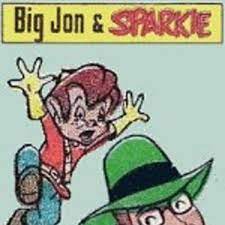
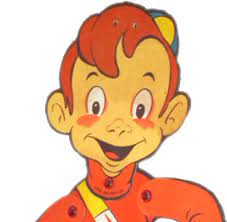
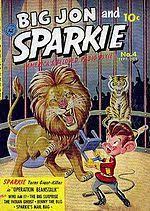

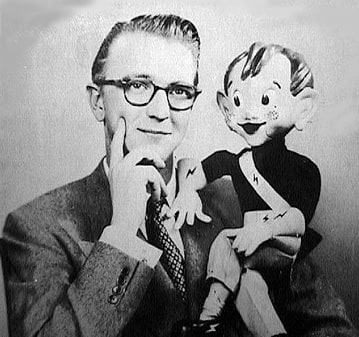
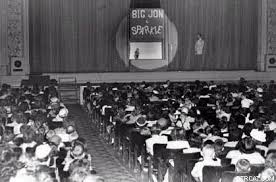




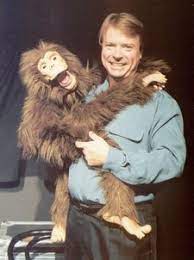
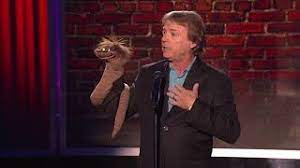

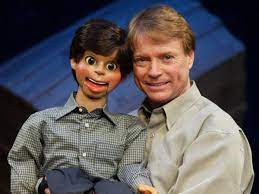
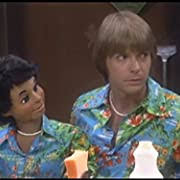
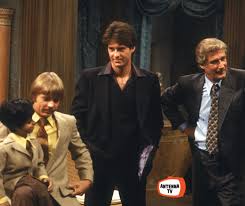
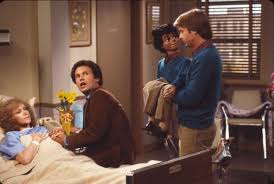










I enjoyed both interviews very much..such great history from a remarkably talented man. I look forward to your book...
Great Part 2 following a Great Part 1. Jay Johnson stands out as both a tremendously talented vent and also a fascinating, down-to-earth, very nice person.
Just as good as the first part. He has an amazing story and I’m glad you helped tell a part of it.
Wonderful two-part interview with Jay. You are grabbing and storing so much history, David. Jay Johnson is one of my idols, is a master at his art, and I am so proud to call him my friend.
Great interview. Thanks for posting.